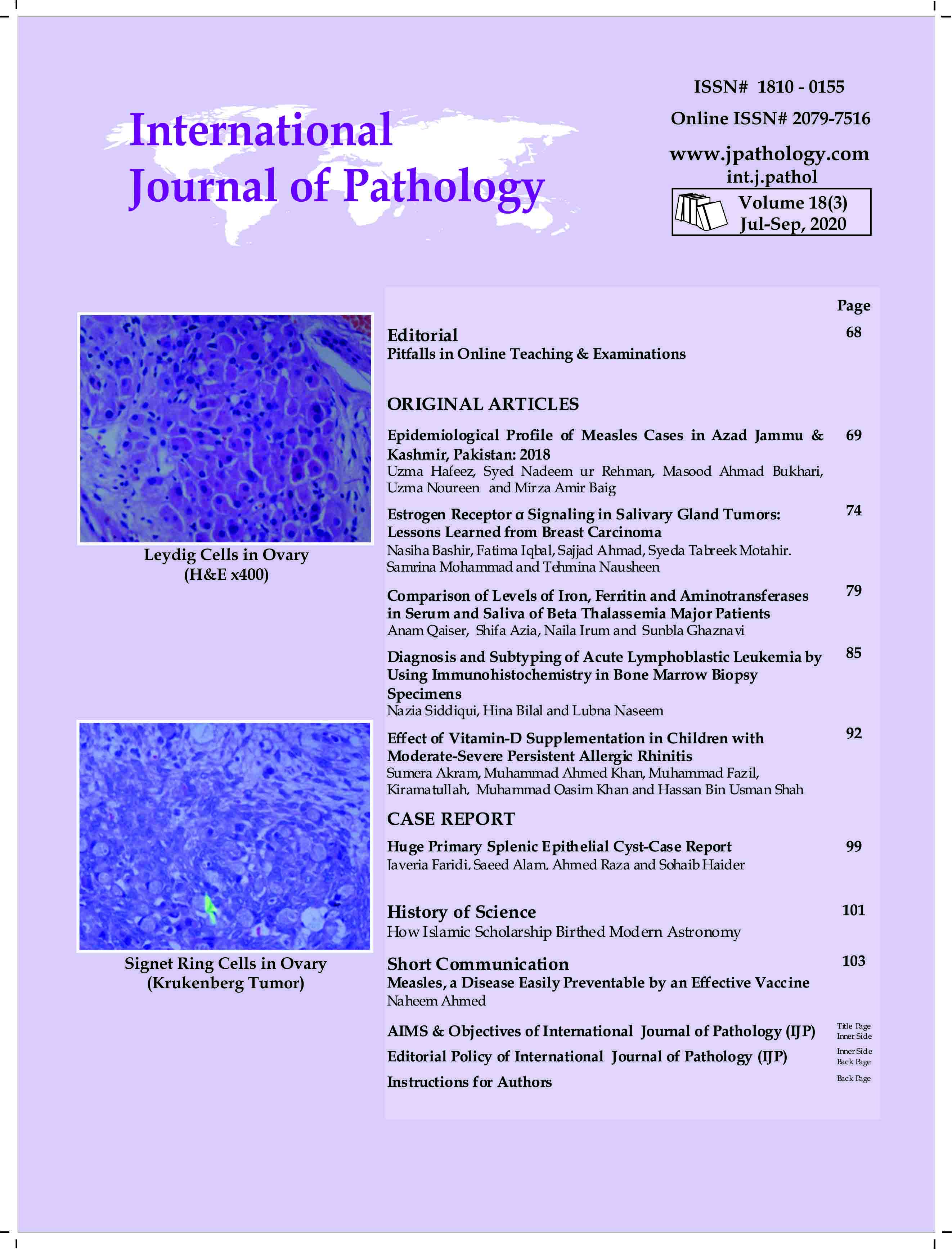Measles, a Disease Easily Preventable by an Effective Vaccine
Abstract
Measles is serious infectious disease caused by RNA virus. Before the introduction of measles vaccine in 1963 and widespread vaccination, major epidemics occurred approximately every 2–3 years and measles caused an estimated 2.6 million deaths each year. Measles is caused by a virus in the paramyxovirus family and it is normally passed through direct contact and through the air. The virus infects the respiratory tract, then spreads throughout the body.
More than 140 000 people died from measles in 2018 – mostly children under the age of 5 years, despite the availability of a safe and effective vaccine. Accelerated immunization activities have had a major impact on reducing measles deaths. During 2000-2018, measles vaccination prevented an estimated 23.2 million deaths. Global measles deaths have decreased by 73% from an estimated 536 000 in 2000to 142,000 in 20181.
Measles is one of the world’s most contagious diseases. It is spread by coughing & sneezing, close personal contact or direct contact with infected nasal or throat secretions.The virus remains active and contagious in the air or on infected surfaces for up to 2 hours. It can be transmitted by an infected person from 4 days prior to the onset of the rash to 4 days after the rash erupts.
Additional Files
Published
Issue
Section
License
Copyright (c) 2021 Naheem Ahmed

This work is licensed under a Creative Commons Attribution-NonCommercial 4.0 International License.
Readers may “Share-copy and redistribute the material in any medium or format” and “Adapt-remix, transform, and build upon the material”. The readers must give appropriate credit to the source of the material and indicate if changes were made to the material. Readers may not use the material for commercial purpose. The readers may not apply legal terms or technological measures that legally restrict others from doing anything the license permits.


